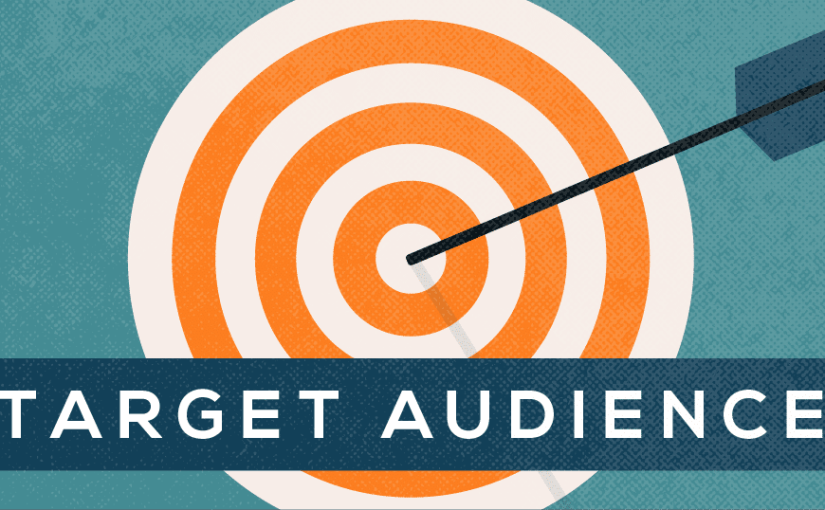A target audience is the demographic of people most likely to be interested in a company’s product or service.
Learn more about how target audiences work and how they help businesses create effective marketing plans.
What Is a Target Audience?
A target audience is a group of people identified as likely customers of a business. Target audiences share similar demographic traits including, but not limited to:
- Age
- Gender
- Location
- Education
- Socioeconomic status
Identifying your target audience as a business can help craft marketing strategies and define your core customers. Instead of spending money and resources trying to cater to every consumer, defining a target audience allows for more intentional and personal outreach to those most likely to purchase your product or service.
How Target Audiences Work
The best way to find your target audience is by first thinking about the specific needs your product or service fulfills. It’s essential to identify the pain point and determine who has it. For example, if you’ve learned that creating websites is a hassle and start a business that designs websites, your next step would be to find out who needs a website that would likely have trouble creating one. In this scenario, your target audience is likely small business owners.
The more specific you can identify your target market s demographic, the more effective you can advertise to them. In this example, it would be best to focus on small business owners who are likely less technically sound. Instead of deeming small business owners as your target market, you may focus on small business owners over a specific age in a particular location.
If your product is very general, you won’t have to do as much market research to find your target audience. If the audience is more specific, gathering data about your customers is vital to narrow your focus. One way to collect data is to offer a special price or coupon code to those who visit your website or business if they fill out a survey that captures the information you need.
Benefits of Target Audiences
Target audiences help businesses advertise more efficiently as you know your target market and how to reach them. While it’s essential to get as many people as possible, and it often seems like focusing only on specific population segments is limiting, you need to reach potential consumers directly.
Directly reaching those interested in your product or service will ultimately put more money in your pocket. Therefore, before you decide what your message is and how to deliver it, you need to understand who you will receive it. To buy into a product or service, people need to relate to the message’s tone and content. A personal connection is made by striking a chord with someone, and trust is established.
Let’s say the goal is to sell a product to working mothers. The advertising methods might employ digital and social media platforms and have an energetic and empathetic tone. A better approach to reaching retired seniors is a marketing campaign using print ads in newspapers and magazines with a softer and more relaxed style.
What Are the Types of Target Audiences?
Target audiences can be segmented further into categories that reference intent, location, interests, and more. Let’s take a look at examples of ways that you can break up your target audience:
Interest
Separate groups out based on their various interests, including hobbies and entertainment preferences. This can help you make data-driven, highly personalized messaging that allows you to connect with your audience in meaningful ways that can help drive brand loyalty.
Purchase Intention
Define groups of people looking for a specific product, such as a new entertainment system or car. This will help you understand your audience’s pain points to create tailored messaging that addresses their needs.
Subcultures
Subcultures are groups of people who share a common experience, such as music genres or entertainment fandoms. By understanding some of your target audience’s motivations, you can better understand who you’re trying to connect with.
Ways to Determine Your Target Audience
To determine your target audience, you must analyze the data you receive from consumer engagements, evaluate current buyers and purchase trends and optimize as new information is revealed.
The following steps should help you realize your target market:
- Analyze Your Customer Base and Carry Out Client Interviews
One of the best ways to determine your target audience is to look at who already buys your product or service. How old are they, where do they live, and what are their interests? An excellent way to learn this is through engaging on social or distributing customer surveys.
- Conduct Market Research and Identify Industry Trends
Look at the market research for your industry to determine where there are holes in service that your product can fill. Look at trends for similar products to see where they are focusing efforts, then hone in on your product’s unique value.
- Analyze Competitors
Marketers can learn a lot by looking at competitors to see who they commonly sell to and how they go about it. Are they using online or offline channels? Are they focusing on the decision maker or the supporter?
- Create Personas
Creating personas is a great way to drill down into the specific segments that make up your target market. This is especially helpful if you have a product that appeals to many consumers. Personas allow you to determine your target consumers’ general demographics, personalities, and needs. The persona of “Fran First-Time Runner” will speak to different conditions than “Sam Seasoned Pro.” Personas are created based on data, surveys, digital engagements, and any other information marketers can pull from to give a complete view of the buyers. This might include favorite hobbies, television shows, publications, etc. It is recommended that marketers develop between three and five personas.
- Define Who Your Target Audience Isn’t
There will undoubtedly be consumers close to your target demographic who will not act on messages. Try to be specific in determining who your audience is and who it isn’t. Is your demographic women or women between the ages of 20 and 40? Knowing this will keep your teams from devoting ad dollars to segments that will not yield returns.
- Continuously Revise
As you gather more data and interact with customers, you will get an increasingly accurate understanding of your target market. Based on this information, you must constantly optimize and hone personas to achieve the best results.
- Use Google Analytics
Google Analytics offers extensive data about the users visiting your site. Can leverage this information to determine critical insights such as what channels your target market is coming from or what content they’re engaging and connecting with, allowing you to make more data-driven decisions during media planning.
How to Reach Your Target Audience
Once you’ve created personas, the next step is to find media that targets these specific segments. Below are some tools to get you started:
Media Kits
Media kits from publishers give a clear idea of the audience segments they reach. Depending on the brand, these can be broken down by job titles, income levels, or hobbies. Marketers should ensure that secondary audiences aren’t included in these totals when selecting where to invest ad dollars. For example, magazines are often passed along to friends and family. This extended shelf life benefits marketers but should not be included when deciding where to buy as they are estimates. Use the paid subscribers when making decisions or negotiating costs.
Nielsen Ratings
Using statistical samplings, Nielsen can predict how many households view a sure show. Although prime time may seem like a great bet to reach broad audiences, you may discover that more niche shows in the early or late fringe will reach your target market for a fraction of the cost. This is especially true as more channels and shows make television highly fragmented.
Social
Social media allows you to target ads based on various demographics and interests. Although the audience can be exact, different demographics consume media differently. Some users may not be receptive to business-related ads on Instagram but may respond more positively on Facebook. It is also essential to measure the success of different ads on these platforms – like display versus native. Test various platforms to see what drives results.
Third-Party Information
Marketing analytics platforms such as the Marketing Measurement and Attribution Platform can help you identify what outlets your target audiences frequent or television shows they watch. When selecting a partner, investigate how these companies determine how to reach the target market. Are they using outdated data, or do they have media partnerships?
Criticism of Target Audiences
One drawback of a target audience is that companies may become too narrow-focused on the defined target audience that they overlook or disregard other potential consumers. Even well-researched target audiences may mistakenly exclude people interested in the product or service, so it’s essential to use target audiences as baselines, not the end-all. As your product and service offerings expand, it’s vital to reevaluate your target audience continuously.
Conclusion:
Some business models can quickly define their target audience.
However, in most cases, brands must adopt a more granular approach to define their target audience. A product can be valuable to various buyers who may represent different characteristics, needs, or goals.
A one-size-fits-all marketing approach won’t work if you want to reach the right people online. So, use the information I’ve shared in this post to identify the different types of buyers and get a firm handle on target audiences.




